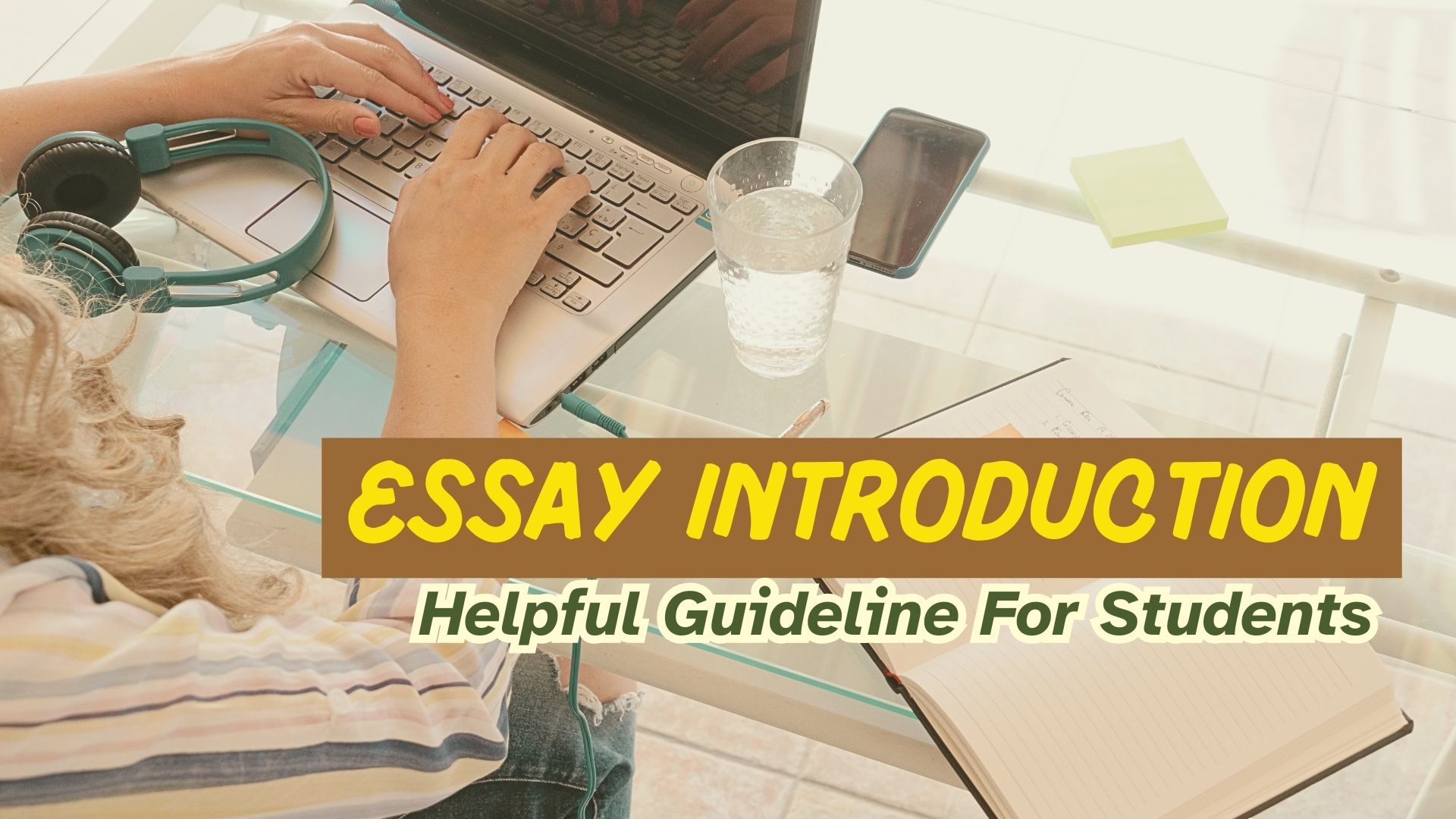For beginners, writing an essay can be like attempting to thread a needle while wearing mittens. Having creativity, critical thinking skills, and clear communication are essential requirements. “How to start an essay?” remains a boilerplate question. Because before you can showcase your ideas and arguments, you need to hook your readers in from the start.
Think of the introduction as a movie trailer – it gives a quick glimpse of what’s to come while piquing curiosity. But how do you craft one that grabs attention and leaves audiences wanting more?
In this guide, we’ll go beyond the basics to explore powerful techniques for captivating your audience and giving your ideas the perfect entrance. We’ll cover the essential components of a winning introduction, including how to establish context, pique interest, and foreshadow your thesis in a way that leaves readers anticipating more. You’ll also get tips for customizing your intro based on the type of essay, whether it’s informative, persuasive, or analytical.
By the end, you’ll walk away with strategies on how to write an introduction paragraph that sets the right tone and smoothly ushers readers into the meat of your essay.
What Is The Purpose Of An Introduction?
The introduction essay is more than just a paragraph that precedes your essay. Here are some of the main purposes of an introduction:
- To capture your reader’s interest and attention.
The introduction is your opportunity to make a good first impression on your reader. You want to pique their curiosity and make them want to know more about your topic and your perspective. You can do this by using a hook, which is a catchy or intriguing statement that draws your reader in.
- To provide context and background information.
The introduction is also where you give some general information about your topic and its relevance. You want to establish the scope and significance of your topic, as well as any necessary definitions or terms. This helps your reader understand the broader context of your essay and why it matters.
- To state your thesis and position.
The thesis statement is the most important sentence in your introduction. It summarizes the main argument or claim of your essay in one or two sentences. It also indicates your position or stance on the topic, as well as the direction and focus of your paper.
- To preview your main points and structure.
The introduction is also where you give a brief overview of the main points or subtopics that you’ll be discussing in your essay. This helps your reader anticipate what’s to come and follow along with your argument. It also shows how you’ve organized and structured your paper.
How To Start An Essay? Understanding The Essence Of An Essay Introduction
So, how to write an essay introduction? Imagine you’re writing an essay, and at the beginning of it, there’s this special part called the “introduction.” Now, what exactly is this introduction thing? Well, think of it as the front door to your essay house. It’s the first thing your readers see, and it plays a crucial role.
Imagine your essay is like a journey, and your readers are travelers. The introduction acts like a map that shows them the way. It gives them an idea of what to expect in your essay, like a sneak peek. But it’s not just that; it’s also your chance to make a good first impression on your readers. It’s like saying, “Hey, come on in! I’ve got something interesting to show you.”
Think of it this way: When you meet someone for the first time, you want to make a good impression, right? You might smile, say something interesting, or be polite. That’s kind of what the introduction does for your essay – it’s your friendly “hello” to your readers.
So, in simpler terms, an essay introduction is like the welcome mat in front of your house. It tells people what’s inside, and it’s your chance to be friendly and grab their attention. And if you do it well, your readers will be more eager to explore the rest of your essay.
The Length Dilemma: How Long Should An Introduction Be?
One of the most common dilemmas that writers often grapple with is how to strike the right balance when it comes to the length of an introduction. Essentially, they ponder over whether it should be a brief, concise paragraph or an extensive, captivating piece that could span pages. The answer, as it turns out, is a matter of equilibrium.
To create an effective introduction, you must consider two primary factors: comprehensiveness and reader engagement. On one hand, it needs to be sufficiently comprehensive to acquaint the reader with the core aspects of your topic. On the other hand, it should be concise enough to maintain the reader’s interest and not overwhelm them. Achieving this balance is essential to ensure that your audience remains engaged from the outset.
The length of an introduction isn’t set in stone and can vary depending on several factors. Firstly, consider the overall length of your essay or piece of writing. If you’re working on a shorter piece, like a blog post or a brief article, a concise introduction of a paragraph or two might suffice. However, if you’re tackling a more extensive and complex topic in a long-form essay or research paper, you’ll likely need a more extended introduction.
Complexity is another important factor. If your topic is intricate and requires a lot of background information, definitions, or context, your introduction might naturally need to be longer to accommodate these necessary elements. Conversely, if your topic is relatively straightforward and doesn’t demand extensive explanation, a shorter introduction will suffice.
In practice, an introduction typically spans anywhere from one to three paragraphs for most writing projects. Within this span, you have the opportunity to set the stage, provide a brief overview of your topic, and give the reader a glimpse of what to expect in the rest of your piece. It’s a bit like the opening act of a play or the trailer of a movie – it should pique the audience’s interest and leave them wanting to know more.
Anatomy Of An Introduction: Structure And Components
To create a compelling introduction, you must understand its structure and the key components that comprise it. Let’s break down the essential elements:
- The Hook
So, how to start off an essay? Imagine the hook as the literary bait that lures your readers into the world of your essay. It’s your chance to make a powerful first impression. Consider starting with a captivating anecdote – a brief story that relates to your topic and captures the reader’s imagination. Alternatively, pose a thought-provoking question that piques their curiosity. You can also employ a startling statistic that shocks or surprises, or use a compelling quote from a relevant figure. The goal here is to instantly engage your audience and make them eager to read on.
- Background Information
Following the hook, it’s essential to provide some context or background information about your topic. Think of this as setting the stage for your readers. Offer a brief overview of the subject matter, its historical or societal relevance, or any key terms or concepts that might be unfamiliar. This background information acts as a bridge between the hook and your thesis statement, helping readers understand the broader context of your essay. It’s like handing them a map before they embark on a journey, ensuring they don’t feel lost along the way.
- Thesis Statement
Now, let’s focus on the thesis statement – the central core of your introduction. This concise statement serves as the compass for your entire essay. It clearly and directly articulates the main argument or purpose of your writing. Think of it as the North Star that guides your readers through the night. It should be precise, specific, and relevant to the topic at hand. While it’s typically found near the end of your introduction, it plays a vital role in shaping your entire essay. It tells readers what you aim to prove or discuss and sets the stage for the subsequent paragraphs.
- Preview of Main Points
Lastly, you wrap up your introduction by offering a glimpse of the journey ahead – a preview of the main points you’ll be addressing in your essay. Think of this as a roadmap that outlines the key destinations your readers can expect to visit as they progress through your writing. This not only helps them anticipate what’s to come but also provides a sense of structure and direction. It’s akin to a tour guide giving a brief overview of the itinerary before embarking on a trip. This preview ensures that your readers are mentally prepared for the exploration that lies ahead and helps maintain their interest throughout the essay.
Tailoring Introductions To Different Essay Types
Different types of essays require distinct approaches to introductions. Here’s how to adapt your introduction strategy based on your essay type:
- Persuasive Essays: In persuasive essays, your introduction serves as a crucial tool to win over your readers to your perspective. This is your opportunity to present a clear and compelling argument that not only grabs the reader’s attention but also persuades them to adopt your point of view. To accomplish this, your introduction should be well-reasoned and structured, highlighting the key points you will be using to make your case throughout the essay. You might start with a compelling statement or a thought-provoking question that immediately draws the reader into the persuasive discourse.
- Expository Essays: Expository essays are all about providing information and explaining a topic thoroughly. Your introduction here should act as a concise roadmap, offering an overview of the subject matter. Focus on presenting the key facts and evidence that you’ll be exploring in-depth within the essay. Essentially, this part of the introduction sets the stage by giving readers a clear sense of what to expect in terms of the information you will be presenting. It’s like showing them the table of contents before they dive into the book.
- Narrative Essays: Narrative essays are akin to storytelling adventures, and your introduction is the opening scene. Start with a captivating story or an engaging anecdote that not only grabs your reader’s interest but also sets the stage for the narrative you’re about to unveil. The idea here is to immerse your audience in the world you’re about to create, making them eager to journey through your narrative. Think of it as the first sentence of a novel that hooks readers and keeps them turning pages.
- Descriptive Essays: Descriptive essays are all about creating a vivid sensory experience for your readers. In your introduction, your goal is to paint a detailed picture in the reader’s mind. This is achieved by employing sensory language, engaging descriptions, and evocative imagery. Start your introduction by describing the subject matter in a way that appeals to the reader’s senses – sight, sound, smell, taste, and touch. By doing so, you transport your readers into the world you’re describing, immersing them in the experience. Think of it as the opening shot of a movie that immediately transports the audience to a specific time and place.
Crafting Your Perfect Introduction: A Step-by-Step Guide
Now that we’ve dissected the components and nuances of introductions, let’s walk through a step-by-step process to create a stellar one:
- Step 1: Understand Your Audience
Focus on how the topic could benefit or interest your target audience. What value will they get from learning about this?
- Step 2: Choose an Engaging Hook
Select a hook that aligns with your essay’s purpose and captures your audience’s interest.
- Step 3: Provide Background Information
Offer context to ensure your readers comprehend the significance of your topic.
- Step 4: Craft a Powerful Thesis Statement
Create a concise and focused thesis statement that conveys the main argument of your essay.
- Step 5: Outline Your Main Points
Briefly outline the primary arguments or points you’ll be discussing in the essay.
- Step 6: Revise and Polish
Review your introduction, refine your language, and ensure it flows smoothly.
Pro Tips For A Remarkable Introduction
To elevate your introduction-writing skills for your custom college essays further, consider these pro tips:
- Be concise: Every word in your introduction should serve a purpose. Remove unnecessary words to tighten your writing.
- Be specific: Clearly state the scope and purpose of your essay. Narrow the focus to a specific thesis or argument.
- Use engaging language: Employ vivid language and strong verbs to create impact. Choose words that draw the reader in and convey your message effectively.
- Edit rigorously: Eliminate unnecessary details or redundancies. Refine and polish your writing through multiple revisions to perfect the introduction.
Need Assistance With Your Essay Intro?
Being able to craft a strong introduction is a very useful skill. Introductions are important at the start of essays and other writing projects. Armed with the knowledge of its structure, tailored to your essay type, and armed with our step-by-step guide and pro tips, you’re well on your way to creating introductions that captivate, inform, and persuade.
Bring out the A-game in your essays and gain an edge over your competition with a helping hand from our expert writers. Besides helping you learn how to start a essay, we can help you with writing them. No more googling “where can I buy essay.” We’ll craft each essay from scratch to your exact specifications, ensuring a winning submission that helps you stand out from the crowd. Invest in your success – contact us today to place an order. Our writers are standing by 24/7 to start working on an essay that impresses your professors and helps advance your academic career. The deadline is approaching fast – don’t leave your grades to chance.
Your path to progress starts here – contact us today and buy essay now!



 by
by 



